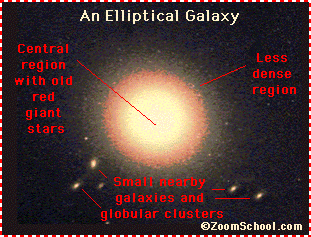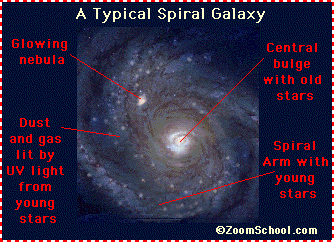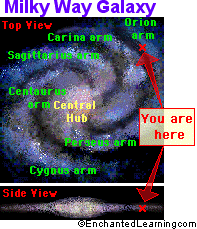Учебное пособие Астрономия. Космическая техника и технологии Алматы, 2012 удк 802. 0 52 629. 7 (0758) ббк 81. Англ. 923
 Скачать 1.02 Mb. Скачать 1.02 Mb.
|
|
Speaking: Work in pairs and answer the questions: Student A 1 What does the word “astronomy” means? 2 What instrument did Tycho Brahe use to chart the positions of planets and other celestial objects with such great precision, that it debunked many of the commonly held notions of planetary and stellar motion? 3 What is the first Kepler’s law of planetary motion? 4 Which scientist was the first to see four of Jupiter’s moons, and the phases of Venus? 5 Whose discoveries and theories dictated the direction of science for more than 200 years, and truly ushered in the era of modern astronomy? 6 Whose relation of energy to mass (E=mc2) is also important to astronomy, as it is the basis for which we understand how the Sun, and other stars, fuse hydrogen into Helium for energy? 7 Who shown that these other galaxies were receding at speeds proportional to their distances away from us? 8 Whose work has significantly increased our knowledge of black holes and other exotic celestial objects? Student B 1 How many main branches of astronomy do you know? 2 What does Optical Astronomy study? 3 What does Non-optical Astronomy study? 4 How long has the sun been studied for centuries? 5 What do Astronomers use instruments to in Stellar Astronomy? 6 What does the Milky Way Galaxy consist of? 7 What do Cosmologists typically focus on? 8 What has study of the nuclear reactions that provide the energy radiated by stars shown? Unit 2 Galaxies and Stars Text 2A Galaxies Overview A galaxy is a massive complex or system of stars, remnants of stars, an interstellar medium of gas and dust, and dark matter. Some include multiple star systems, clusters, and interstellar clouds. Galaxies are bound by gravity and contain from millions to trillions of stars. The size of some galaxies are measured in units called parsecs, others are measured in light years. One parsec is equivalent to about 19 trillion miles (31 trillion kilometers). An average galaxy may extend from 1,000 - 100,000 parsecs. A light year is the distance that light travels in an Earth year. Light travels at nearly 300,000 km per second (180,000 miles). If you were to calculate the actual size of a galaxy using numbers, rather than the aforementioned units, the resulting figure would be impossible to understand or conceptualize. Galaxies are usually separated by spaces that extend over millions of parsecs. These vast spaces are called intergalactic spaces. Despite the vast distances between them, galaxies are often organized into clusters and super clusters. Clusters and super clusters are then organized into sheets and filaments. A filament, defined as structures that form the boundaries between large voids in the universe, are the largest known structures in the universe. Types of Galaxies G  alaxies are usually classified according to their shape. alaxies are usually classified according to their shape.Elliptical galaxies are round with a smooth, elliptical shape. It is also called an "E" or "E-type" galaxy. They vary greatly in size; the largest galaxies that we can see are elliptical. Unlike spiral galaxies, elliptical galaxies are generally yellow-red in color, do not have spiral arms, and contain little interstellar dust or gas. They are generally found in rich clusters of galaxies. S  piral galaxies are galaxies with a central, dense area and spiraling arms (which are often sites of star formation). These common galaxies have two major parts: piral galaxies are galaxies with a central, dense area and spiraling arms (which are often sites of star formation). These common galaxies have two major parts:- a central, flat disk containing a dense cloud of interstellar matter and young star clusters (mostly on the arms) - a central bulge (or nucleus) containing older stars There are two types of spiral galaxies, "S" (normal spiral) and the less common "SB" (barred spiral, with an elongated center). The Milky Way and the Andromeda Galaxy(M31) are two of a multitude of known spiral galaxies. Peculiar galaxies are shaped irregularly, likely because of the gravitational pull of a nearby galaxy. Scientists estimate the presence of 100 billion galaxies in the universe. Dark Matter About 90% of the mass of an average galaxy is made of up mysterious, invisible masses called dark matter. Dark matter is hypothetical; its actual existence is simply scientific and mathematical hypotheses. Only its gravitational effects on visible objects can be observed (such as the rotational curves of spiral galaxies). Some scientists think dark matter is concentrated in huge masses such as black holes. Our Galaxy Our solar system lies within the Milky Way galaxy. The Milky Way galaxy contains over 200 billion stars and has a diameter of up to 120,000 light years. Our solar system orbits around the Milky Way once every 200-250 million years. You can see the Milky Way galaxy on a clear night. It looks like a milky white band across the night sky. The center of the galaxy is located in the direction of the constellation Sagittarius. The Milky Way is thought to be nearly as old as the universe itself. Some estimates age the galaxy at over 13 billion years. It is part of a cluster of galaxies known as the Local Group. Two smaller galaxies and a number of dwarf galaxies actually orbit the Milky Way, the largest of which is called the Large Magellanic Cloud. Considered an irregular galaxy, the Large Magellanic Cloud is thought to be about 160,000 light years away from the Milky Way. Although our Milky Way is ten times larger, scientists estimate than 10 billion suns could fit in the Large Magellanic Cloud. The galaxy was first observed by explorer Ferdinand Magellan, whom the galaxy is named for and looks like a small night cloud in the southern hemisphere. Choose the correct answer: 1) The existence of dark matter is "hypothetical." What does hypothetical mean in this instance? a) Possible b) Calculated c) Definite d) Impossible 2) Our galaxy is part of a group of galaxies called the ___. a) Large Magellanic Cloud b) Milky Way c) Local Group d) Solar System 3) The Large Magellanic Cloud is a ___ that orbits the ___. a) star; Milky Way b) star; sun c) galaxy; Milky War d) galaxy; sun 4) The shape of irregular galaxies is likely caused by the ___ of nearby galaxies. a) orbit b) gravitational pull c) size d) rotation 5) Galaxies are measured in units called ___. a) meters b) miles c) dark matter d) parsecs 6) Galaxies are normally classified by their ___. a) shape b) age c) stars d) size 7) A light year is the ___ in which light travels in one year. a) velocity b) speed c) distance d) volume 8) The largest known structures in the universe are called ___. a) filaments b) sheets c) solar systems d) galaxies 9) Galaxies are mostly made of ___. a) dark matter b) constellations c) stars d) planets 10) Spaces in between galaxies are called ___. a) interstellar clouds b) intergalactic spaces c) solar systems d) clusters Vocabulary Find words or phrases in the article that mean the following. You’ve been given the first letter to help you. 1 G___ is an enormous collection of a few million to trillions of stars, gas, and dust held together by gravity. 2 The size of some galaxies is measured in units called p___. 3 A l___ y___ is the distance that light travels in an Earth year. 4 A f___ are structures that form the boundaries between large voids in the universe. 5 About 90% of the mass of an average galaxy is made of up mysterious, invisible masses called d___ m___. T  ext 2B ext 2BThe Milky Way The Greek philosopher Democritus (450–370 BC) proposed that the bright band on the night sky known as the Milky Way might consist of distant stars. Aristotle (384–322 BC), however, believed the Milky Way to be caused by "the ignition of the fiery exhalation of some stars which were large, numerous and close together" and that the "ignition takes place in the upper part of the atmosphere, in the region of the world which is continuous with the heavenly motions." The Neoplatonist philosopher Olympiodorus the Younger (c. 495–570 AD) criticized this view, arguing that if the Milky Way were sublunary it should appear different at different times and places on the Earth, and that it should have parallax, which it does not. In his view, the Milky Way was celestial. This idea would be influential later in the Islamic world. The Arabian astronomer, Alhazen (965–1037), made the first attempt at observing and measuring the Milky Way's parallax, and he thus "determined that because the Milky Way had no parallax, it was very remote from the Earth and did not belong to the atmosphere." The Persian astronomer Abū Rayhān al-Bīrūnī (973–1048) proposed the Milky Way galaxy to be "a collection of countless fragments of the nature of nebulous stars." The Andalusian astronomer Ibn Bajjah ("Avempace", d. 1138) proposed that the Milky Way was made up of many stars that almost touch one another and appear to be a continuous image due to the effect of refraction from sublunary material, citing his observation of the conjunction of Jupiter and Mars as evidence of this occurring when two objects are near. The Syrian-born Ibn Qayyim Al-Jawziyya (1292–1350) proposed the Milky Way galaxy to be "a myriad of tiny stars packed together in the sphere of the fixed stars". Actual proof of the Milky Way consisting of many stars came in 1610 when Galileo Galilei used a telescope to study the Milky Way and discovered that it is composed of a huge number of faint stars. In 1750 Thomas Wright, in his An original theory or new hypothesis of the Universe, speculated (correctly) that the galaxy might be a rotating body of a huge number of stars held together by gravitational forces, akin to the solar system but on a much larger scale. The resulting disk of stars can be seen as a band on the sky from our perspective inside the disk. In a treatise in 1755, Immanuel Kant elaborated on Wright's idea about the structure of the Milky Way.
Answer the questions: 1) What did the Greek philosopher Democritus (450–370 BC) propose? 2) What did Aristotle believe in? 3) What idea philosopher Olympiodorus the Younger would be influential later in the Islamic world? 4) Who made the first attempt at observing and measuring the Milky Way's parallax? 5) Who proposed the Milky Way galaxy to be "a collection of countless fragments of the nature of nebulous stars"? 6) Who proposed that the Milky Way was made up of many stars that almost touch one another and appear to be a continuous image due to the effect of refraction from sublunary material, citing his observation of the conjunction of Jupiter and Mars as evidence of this occurring when two objects are near? 7) Who proposed the Milky Way galaxy to be "a myriad of tiny stars packed together in the sphere of the fixed stars"? 8) When did actual proof of the Milky Way consisting of many stars come? 9) What did Thomas Wright, in his An original theory or new hypothesis of the Universe, speculate in 1750? 10) Who elaborated on Wright's idea about the structure of the Milky Way? 11) When was the first attempt to describe the shape of the Milky Way and the position of the Sun in it carried out? 12) Who in 1920 arrived at the picture of a small (diameter about 15 kiloparsecs) ellipsoid galaxy with the Sun close to the center? 13 What was a different method by Harlow Shapley based on? Listening “How did the Milky Way get its name?” We are at Space Place Musings. We are going to listen to New Millennium Program with Diane Fisher. We are here with Dr. Marc Rayman, a scientist at the Jet Propulsion Laboratory, to ask him a question from one of our many Space Place partners across the U.S. For questions 1-9 complete the sentence: 1) A galaxy is a big collection of stars, and ours has a few hundred billion of them, including the Sun. There are about ___times more stars in our galaxy than there are people on Earth. 2) Even traveling at the speed of light, it would take about years to cross the Milky Way. 3) The universe is far, far larger than the Milky Way. Our galaxy is simply one of hundreds of billions in the known universe. A galaxy like ours—as enormous as it is—is but a tiny __of stars in the vast ocean of the cosmos. 4) Many of the stars probably have planets orbiting them. The galaxy also includes clouds of gas and dust, some of which are in the process of forming new stars and planets. We’ve talked about that in other Space Place Musings. And, most of all, the galaxy holds a large amount of what astronomers call ___. 5) Dark matter is a mysterious substance that we can’t see, but we know it exists because of how its gravity affects the stars we can see. Another strange object lurks at the center of the Milky Way. It’s a tremendous ___, perhaps 4 million times more massive than the Sun. 6) We live at a safe distance. Our solar system is about half way from the center to the outer edge, and it takes light ___ years to cross that distance. 7) If you could look at our galaxy from the outside, you would mostly see the spiral arms and the bright ball of stars at the center. It might look almost like a starfish with its arms curved around in one direction. Most of the stars, including our Sun, and most of the gas and dust are in those ___. 8) The ancient Greeks had plenty of dark skies. And they had a myth that this white band was milk left in the sky by the goddess Hera. In fact, the word “galaxy” comes from the Greek word for ___. 9) The Milky Way is the shaded band cutting across the sky. During the summer and fall months, you may see a grouping of stars in the constellation Sagittarius that resembles a ___, and whenever you see that, you can look for the Milky Way rising from the spout like steam.
Word Bank:
Each ___in the sky is an enormous glowing ball of gas. The closest star to us is the ___our Sun is a medium-sized star. Other than the Sun, the closest star is Proxima Centauri, which is 4.3 ___from us. Stars can live for ___ of years. A star is born when an enormous cloud of hydrogen gas collapses until it is hot enough to burn nuclear fuel (producing tremendous amounts ___ and radiation). As the nuclear fuel runs out (in about 5 billion ___), the star expands while the core contracts; it becomes a giant star that eventually explodes and turns into a dim, cool object (a black dwarf, neutron star, or black hole, depending on its initial mass). The largest stars have the ___ life span (still billions of years); more massive stars burn hotter and faster than their smaller counterparts (like the Sun). Stars are giant ___ reactors. In the center of stars, ___ are taken apart by tremendous atomic collisions that alter the atomic structure and release an enormous amount of energy. This makes stars hot and bright. In most stars, the primary reaction converts hydrogen atoms into ___ atoms, releasing an enormous amount of energy. In the universe, most stars occur in groups of at least ___ stars. Two stars that are locked in an ___ orbit around their center of mass (their barycenter) are called a binary star system. About half of all stars are in a binary star system. There are larger groups of stars, called clusters that are relatively unorganized collections of stars. Huge, organized collections of stars are called ___. Our Solar System is located in the ___ Galaxy, a spiral galaxy. All groups of stars are held together by ___ forces. | |||||||||||||||||||

